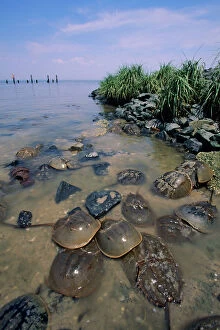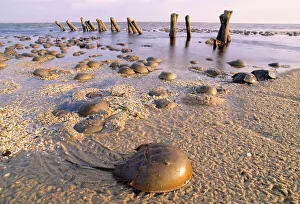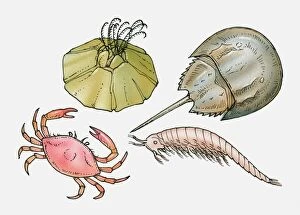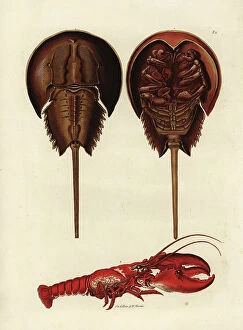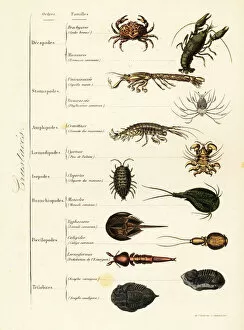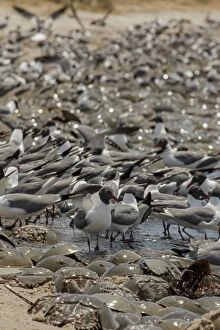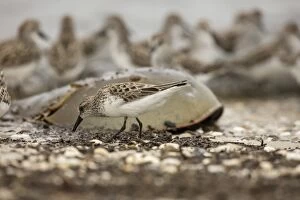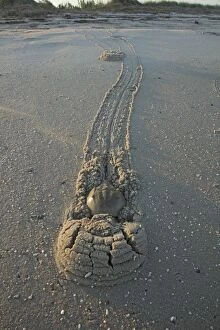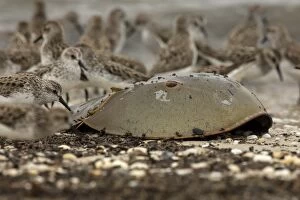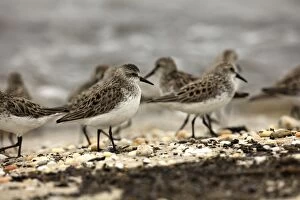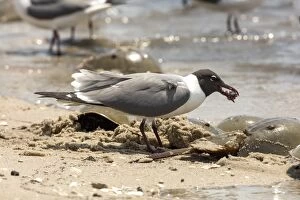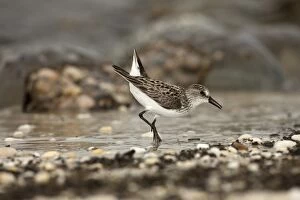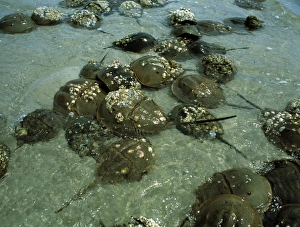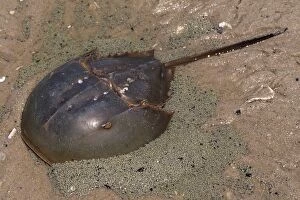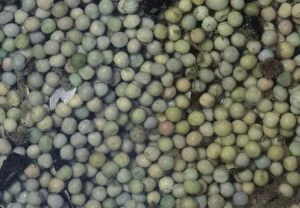Limulus Polyphemus Collection
Limulus polyphemus, commonly known as the Atlantic horseshoe crab, is a fascinating creature found along the shores of Reeds Beach in New Jersey, USA
All Professionally Made to Order for Quick Shipping
Limulus polyphemus, commonly known as the Atlantic horseshoe crab, is a fascinating creature found along the shores of Reeds Beach in New Jersey, USA. With its unique appearance and ancient lineage dating back hundreds of millions of years, this species never fails to captivate both scientists and beachgoers alike. As the tide recedes, one can often spot these horseshoe crabs scattered across the sandy shore. Their distinctive shape resembles that of a horseshoe with a hard exoskeleton protecting their bodies. These remarkable creatures are not true crabs but belong to an ancient group called arthropods which includes barnacles, shrimps, and other crustaceans. The sea groynes in the background provide shelter for various marine organisms including Limulus polyphemus. These structures help create calm areas where these gentle creatures can find refuge during high tides or storms. Illustrations depicting barnacles, shrimp, and crabs alongside the horseshoe crab showcase their close evolutionary relationships within the diverse orders of marine and terrestrial crustaceans. It's incredible to think about how these seemingly different creatures share common ancestors from deep in Earth's history. Picture No. 11806853 reveals a close-up view of an Atlantic horseshoe crab showcasing its intricate details - spiky tail-like appendages used for steering through water currents and multiple pairs of legs adapted for walking on land or swimming in shallow waters. In Picture No. 11806851, we witness another aspect of their lives as they gather together during mating season on sandy beaches like Reeds Beach. This annual spectacle attracts numerous researchers who study their reproductive behaviors while ensuring their conservation. Pictures No. 11806846, 11806845, 11806842 depict different stages in the life cycle - from tiny hatchlings emerging from eggs buried beneath sand to fully grown adults ready to embark on long migrations. Lastly, Picture No.

